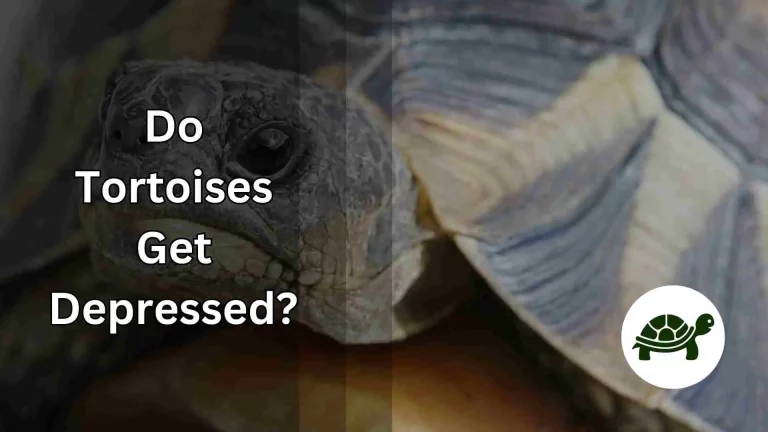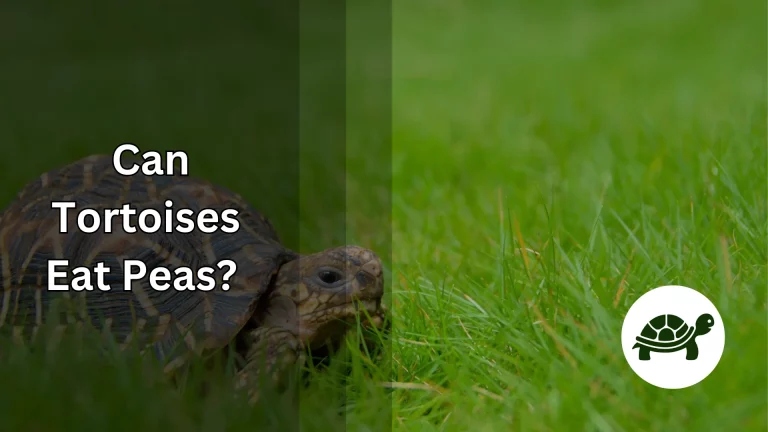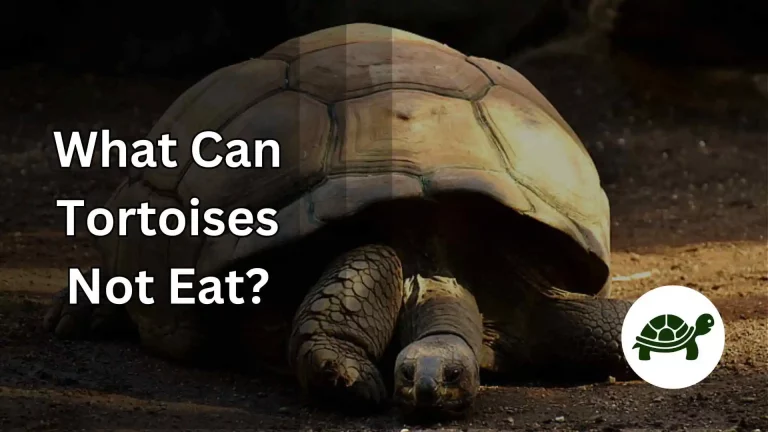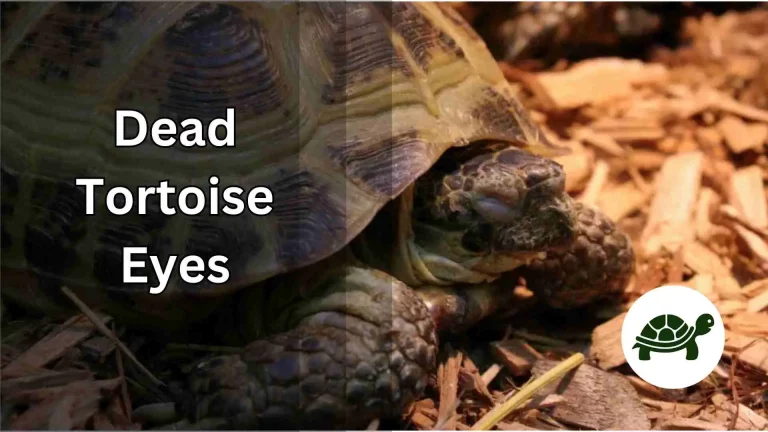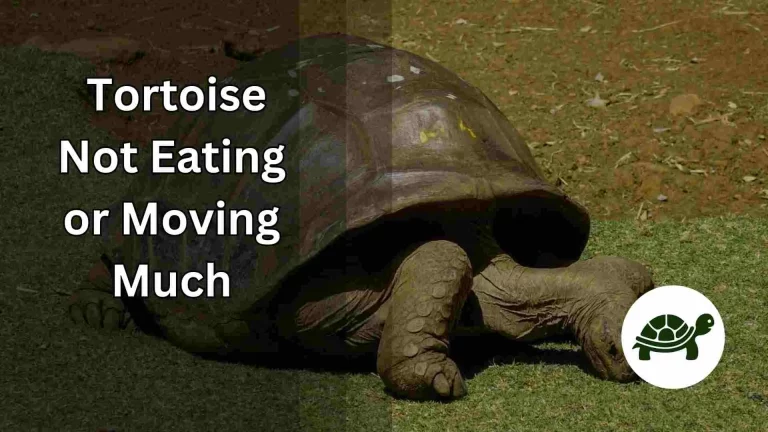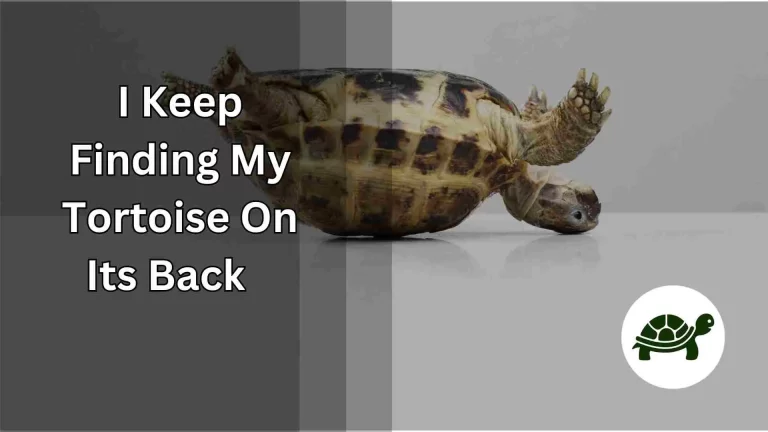What Happens If a Tortoise Gets Too Cold?
When most people picture a tortoise, they often imagine these ancient reptiles lazily sunning themselves on a rock or slowly ambling along. There’s a good reason for this image; temperature plays a pivotal role in the life and health of a tortoise. Being ectotherms, tortoises rely heavily on their external environment to regulate their body temperature. So, what happens when these hard-shelled creatures face cold temperatures, and how does it affect their well-being?
Just like humans bundling up in cold weather, tortoises have specific needs when the mercury drops. But unlike us, they can’t just put on a sweater or crank up the heat. For tortoises, being too cold can have severe consequences, ranging from slowed metabolic processes to severe health risks. If you’re a tortoise owner or simply curious about these fascinating animals, understanding the effects of cold temperatures on them is crucial.
Throughout this article, we’ll delve deep into the world of tortoises and temperature, uncovering signs of a too-cold tortoise and exploring ways to ensure they remain healthy and warm. Whether you’re a seasoned tortoise keeper or just starting out, there’s plenty to discover about these resilient creatures and their unique needs.
Understanding Tortoise Physiology
At a glance, tortoises might seem like simple creatures, with their slow pace and sturdy shells. However, beneath that tough exterior lies a complex physiological system closely tied to their surroundings. Tortoises, like all reptiles, are ectotherms. This term, often used interchangeably with ‘cold-blooded’, means that instead of producing their own body heat, tortoises rely on external sources, like the sun or a warm rock, to regulate their internal temperature.
This dependence on external warmth makes them incredibly sensitive to environmental changes. When the temperature soars, a tortoise’s metabolic rate can increase, leading them to be more active. Conversely, in colder settings, their metabolism slows, often making them lethargic or less responsive. This dynamic balance is a dance of survival, allowing tortoises to conserve energy when needed and be lively when conditions permit.
For tortoise enthusiasts and owners, recognizing this physiological dependency is essential. It’s not just about providing them with food and a safe space; it’s about ensuring their environment mirrors the warmth and consistency they’d find in nature. Knowing how intertwined a tortoise’s health is with its temperature can be the key to ensuring their longevity and vitality.
The Impact of Cold Temperatures on Tortoises
The gentle tortoise, with its iconic shell and leisurely pace, has roamed our planet for millions of years, evolving and adapting to various environments. But one constant remains: the critical role temperature plays in their lives. A drop in the mercury isn’t just a minor inconvenience for these creatures; it can bring about significant physiological changes.
One of the most immediate effects of cold exposure is a slowed metabolism. As ectotherms, tortoises’ metabolic rates are intrinsically tied to the environment. In colder conditions, their bodies slow down to conserve energy, which can result in reduced activity or even dormancy in extreme cases. This reduced state can also lead to digestive issues. A cold tortoise may have trouble processing food, which is why it’s vital not to feed them when temperatures dip too low.
But it doesn’t end there. A drop in body temperature can also suppress their immune system, making them more susceptible to illnesses. In the wild, this vulnerability might mean a reduced chance of survival. In captivity, a vigilant owner might notice their pet becoming more prone to infections or other health issues.
So, as temperatures begin to drop, whether due to seasonal changes or environmental factors, understanding the profound impact on a tortoise’s well-being is essential. By recognizing these signs and acting promptly, we can ensure these ancient creatures continue to thrive in our care.
Signs Your Tortoise Might Be Too Cold
While tortoises don’t have the luxury of donning a winter coat or sipping hot cocoa when chilly, they do exhibit specific signs indicating they’re feeling the cold. For tortoise owners and enthusiasts, recognizing these indicators is crucial to ensure the well-being of these gentle creatures.
Lethargy and Decreased Movement
One of the most evident signs is a significant reduction in activity. Tortoises, when too cold, tend to move less, often appearing sluggish or even immobile. If your tortoise, usually curious and active, starts to display such inertia, it might be feeling the cold’s effects.
Reduced Appetite or Refusal to Eat
Cold temperatures affect a tortoise’s metabolic rate. As their systems slow down, their appetite diminishes. If you notice your tortoise turning away from its favorite treats or showing little interest in food, it could be an indication of being too cold.
Color Changes or Skin Discolorations
Some tortoise species may show subtle changes in skin or shell coloration when exposed to prolonged cold. Look for any unusual dark spots, paleness, or other discolorations as potential warning signs.
Irregular Breathing or Wheezing Sounds
Respiratory issues can arise when a tortoise gets too cold. If you hear unusual breathing sounds, wheezing, or notice irregular breathing patterns, it’s essential to consult a vet and address the temperature issue immediately.
Knowledge is the first step in ensuring our shelled companions stay healthy and happy. By staying observant and understanding the signs of a cold-stricken tortoise, owners can act swiftly, providing the warmth and care these ancient reptiles need to thrive.
Risks of Extended Cold Exposure

Tortoises, with their robust shells and age-old wisdom, might seem indestructible. However, they have vulnerabilities, and prolonged exposure to cold is among their primary threats. Understanding the risks associated with extended cold exposure is paramount for ensuring their health and longevity.
Hibernation vs. Brumation
It’s essential to differentiate between hibernation, a term more commonly associated with mammals, and brumation, the reptilian equivalent. While both involve periods of reduced activity, brumation is a state where reptiles, including tortoises, significantly slow their metabolic processes in response to cold. Without the proper conditions, extended brumation can be detrimental to a tortoise’s health.
The Danger of Freezing
At extremely low temperatures, there’s a risk of tortoises freezing. This isn’t merely a state of dormancy; it’s a life-threatening condition. When tortoise cells freeze, they can rupture, leading to irreversible damage or even death.
Respiratory Issues and Potential for Pneumonia
Cold and damp conditions are a recipe for respiratory problems in tortoises. Extended exposure to such environments can lead to infections, bronchitis, and even pneumonia, a serious condition requiring immediate veterinary attention.
Immune Suppression
As mentioned earlier, cold temperatures can suppress a tortoise’s immune system. This suppression means that, over prolonged periods, a cold tortoise is more susceptible to various illnesses, making them more vulnerable than their warmer counterparts.
Tortoises have weathered the sands of time, surviving eras where many other species have vanished. However, in our care, understanding the perils of extended cold exposure and acting accordingly is our responsibility. By being vigilant and knowledgeable, we can ensure these magnificent creatures continue their journey in health and happiness.
Tips to Protect Your Tortoise from the Cold

Tortoises, despite their ancient lineage and tough appearance, are sensitive creatures. As the temperature drops, their well-being becomes a concern. But fret not! Whether you’re a first-time tortoise guardian or a seasoned caretaker, there are actionable steps you can take to ensure they remain snug and safe during colder months.
Ideal Temperature Ranges
Each tortoise species has its own optimal temperature range. For instance, most Mediterranean tortoises thrive at temperatures between 75°F to 100°F (24°C to 38°C). Familiarize yourself with the specific range for your tortoise and monitor their environment accordingly.
Using Heat Lamps and Under-tank Heaters
Heat lamps provide a warm basking spot, while under-tank heaters raise the overall temperature of the enclosure. These tools can be invaluable in maintaining the desired temperature. Just ensure they are placed safely, avoiding direct contact, to prevent burns.
Monitoring and Maintaining the Right Humidity
Alongside temperature, humidity plays a crucial role in a tortoise’s environment. Use hygrometers to monitor humidity levels, and consider misting the enclosure or adding a water dish to maintain optimal conditions.
Safe Indoor and Outdoor Enclosures
During colder months, an indoor enclosure might be more suitable. If your tortoise remains outside, ensure they have a sheltered spot free from drafts and dampness. Some owners even opt for “tortoise houses” equipped with insulation and heating.
Regular Checks and Observations
Stay observant! Regularly check your tortoise for signs of distress or discomfort. This not only helps in early detection of any cold-related issues but also strengthens your bond with the creature.
Protecting your tortoise from the cold isn’t just about equipment and numbers; it’s a labor of love. By staying informed and proactive, we can ensure that these gentle giants continue to grace our lives with their serene presence, come rain or shine—or frost!
What to Do If You Suspect Your Tortoise Is Too Cold
Even with the best preparations and care, there might come a time when you suspect your tortoise is feeling the chill a bit too intensely. Quick action and informed decisions are essential in such situations to ensure your tortoise’s health and safety.
Immediate Warmth

If you find your tortoise in a cold state, the primary goal is to warm it up gradually. Place it in a room with ambient temperature or under a mild heat lamp. Avoid sudden temperature spikes as these can be just as harmful.
Hydration is Key

Cold temperatures can lead to dehydration in tortoises. Ensure they have access to fresh water, and you might even consider soaking your tortoise in lukewarm water for 20-30 minutes to help rehydrate it.
Consult a Veterinarian
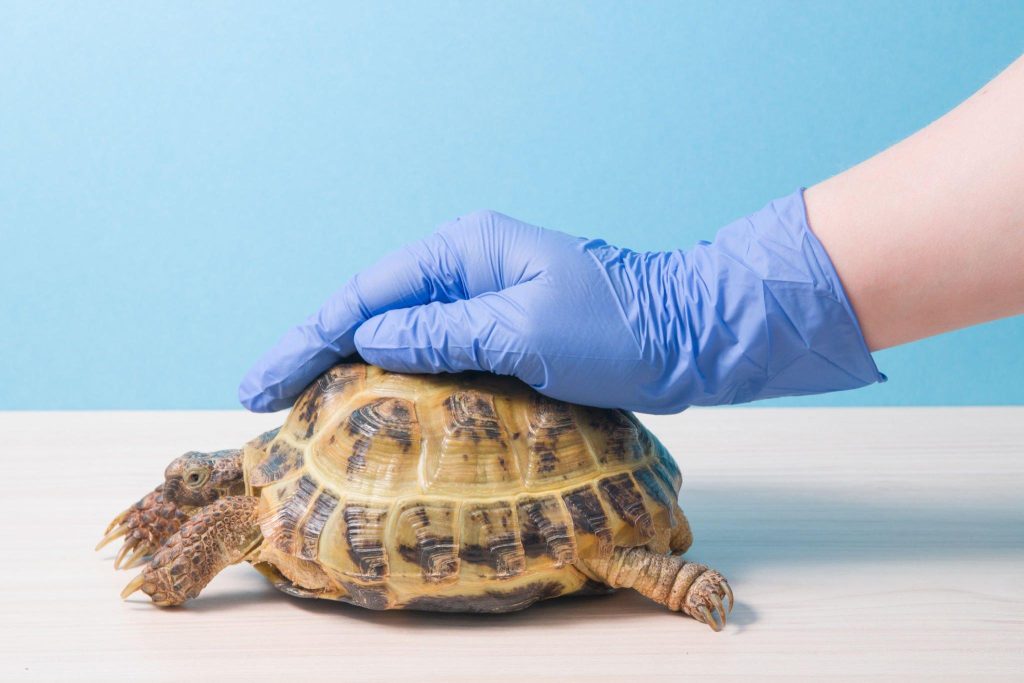
If you suspect your tortoise has been exposed to cold temperatures for an extended period, it’s wise to seek professional advice. A vet can assess its health, address potential issues like respiratory infections, and provide guidance on care.
Regular Monitoring

After a cold incident, it’s essential to keep a close eye on your tortoise for any signs of distress or health issues. Monitoring its behavior, appetite, and activity levels can help detect any potential problems early on.
Reassess Their Environment
If your tortoise got too cold in its current setup, it’s time to evaluate and make necessary adjustments. This might mean upgrading heating equipment, adding insulation, or even moving the enclosure to a warmer spot.
Facing a situation where your beloved tortoise is too cold can be daunting. However, armed with the right knowledge and a responsive approach, you can navigate these icy waters and ensure your shelled companion remains safe and sound.
Frequently Asked Questions (FAQs) about Tortoises and Cold Temperatures
1. Can tortoises survive in snow or freezing temperatures?
While tortoises have impressive adaptability, they are not built to withstand snow or freezing conditions. Extended exposure to such temperatures can be life-threatening. If you reside in an area with snow or freezing temperatures, it’s essential to provide indoor accommodations or heated shelters for your tortoise during colder months.
2. How can I tell if my tortoise is entering brumation?
Brumation in tortoises, akin to hibernation in mammals, is characterized by reduced activity, lowered metabolic rate, and decreased food intake. They might bury themselves in substrate or hide in shelters. It’s crucial to ensure that the temperature and environment are safe if a tortoise is showing signs of brumation.
3. Is it safe to use heating pads for tortoises?
Heating pads, especially those designed for reptiles, can be safe and beneficial. However, always ensure they are set to an appropriate temperature, placed in a manner to prevent direct contact, and are used alongside a thermostat to avoid overheating.
4. How often should I monitor the temperature in my tortoise’s enclosure during winter?
It’s advisable to check the temperature at least twice a day, once in the morning and once in the evening. Using a digital thermometer can provide accurate readings. During extreme cold spells, more frequent checks are beneficial.
5. My tortoise ate while it was too cold; is that bad?
When tortoises are cold, their metabolic rate drops, making digestion difficult. If a tortoise eats in such a state, the food might not be digested properly, leading to potential health complications. If you suspect this has occurred, consult a veterinarian for guidance.
Conclusion
Tortoises, with their slow gait and protective shells, have enchanted humans for generations. These remarkable reptiles, while resilient, are vulnerable to the cold’s harsh grip. As caretakers, understanding their physiology, recognizing signs of distress, and implementing preventive measures are vital for their well-being. In a rapidly changing environment, staying informed and proactive is the cornerstone of providing these ancient wanderers a safe haven.
By respecting their unique needs and equipping ourselves with knowledge, we not only ensure the longevity and health of our tortoises but also celebrate the deep bond formed over millennia between humans and these captivating creatures.


